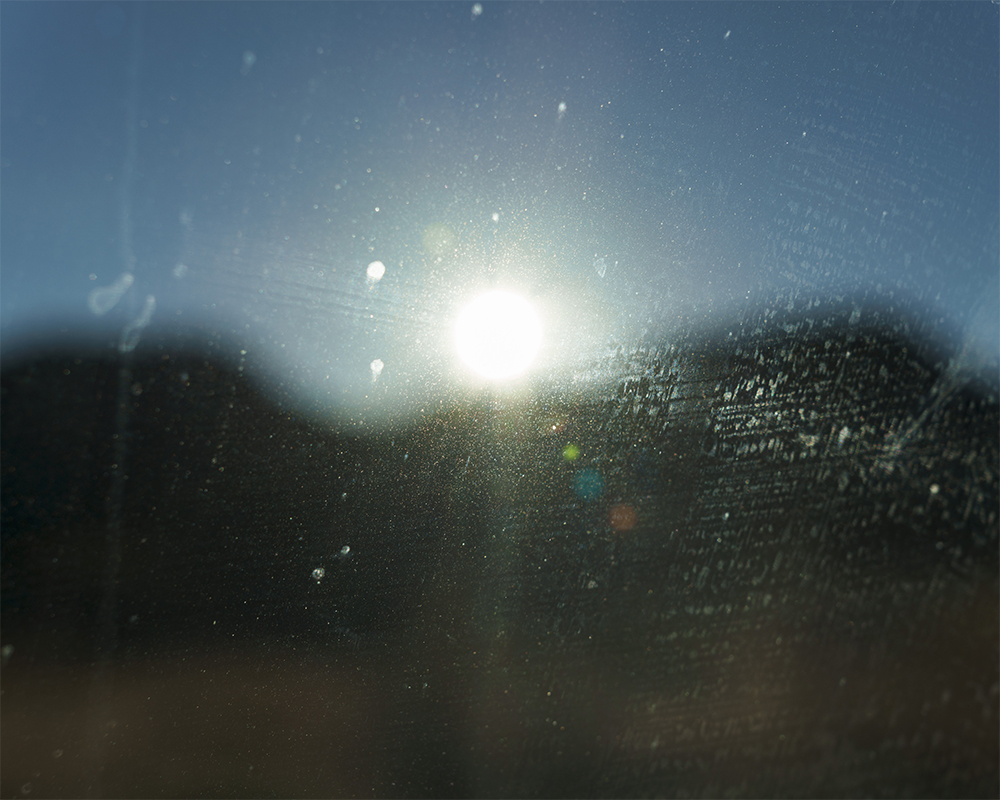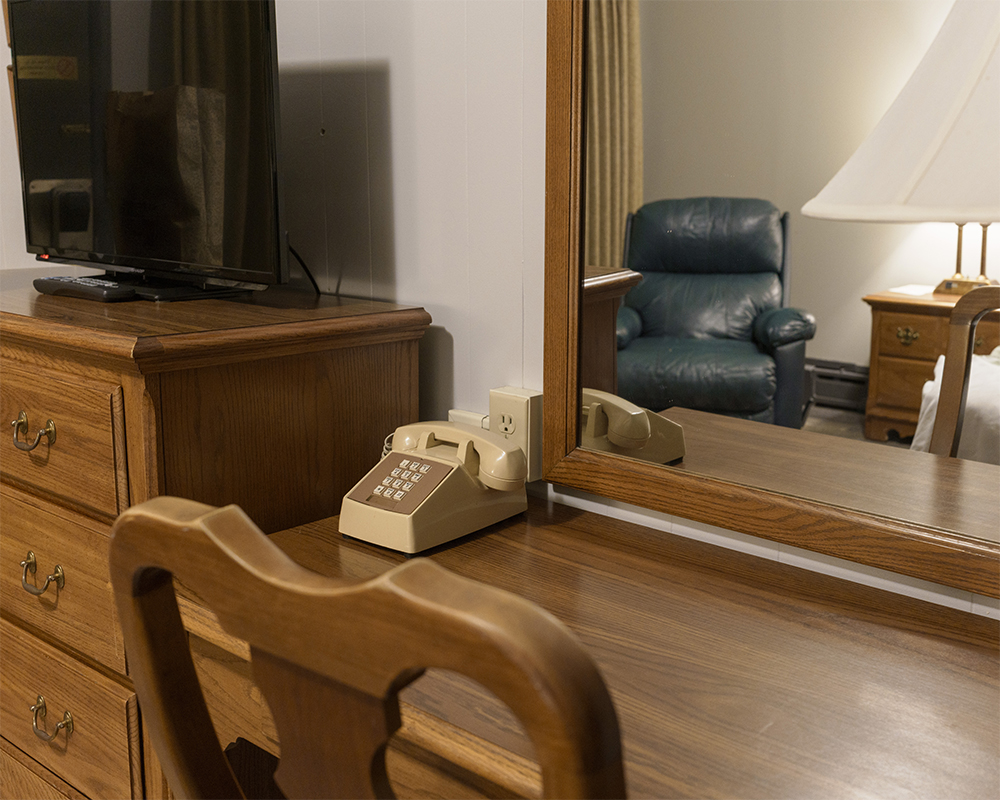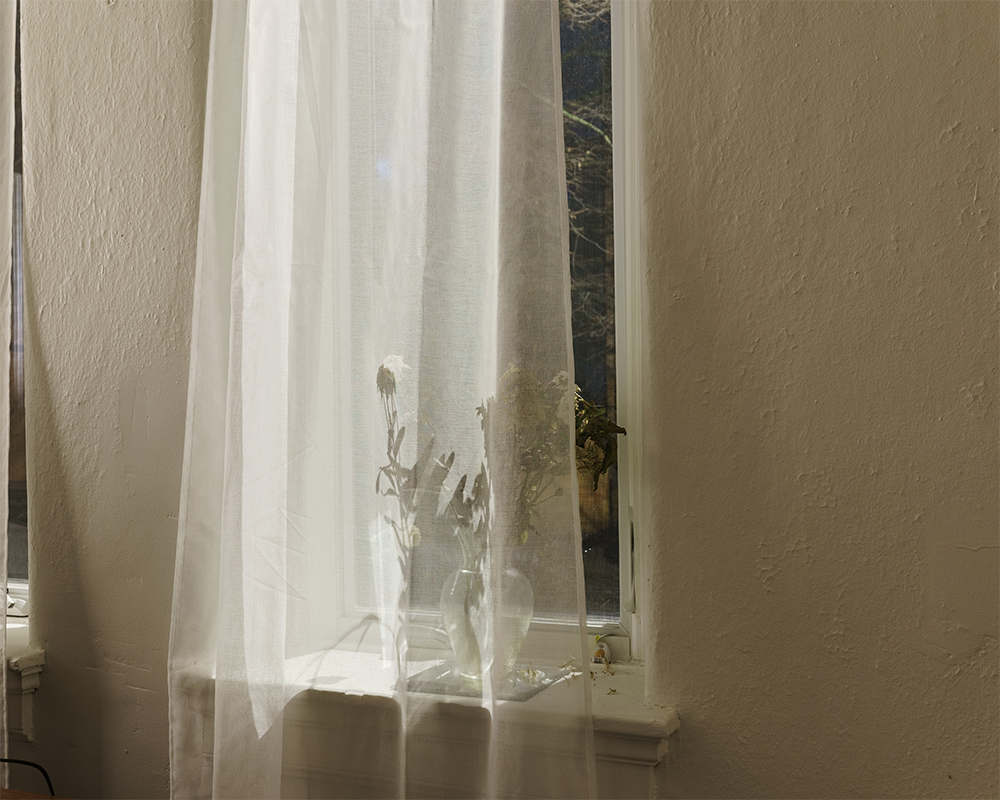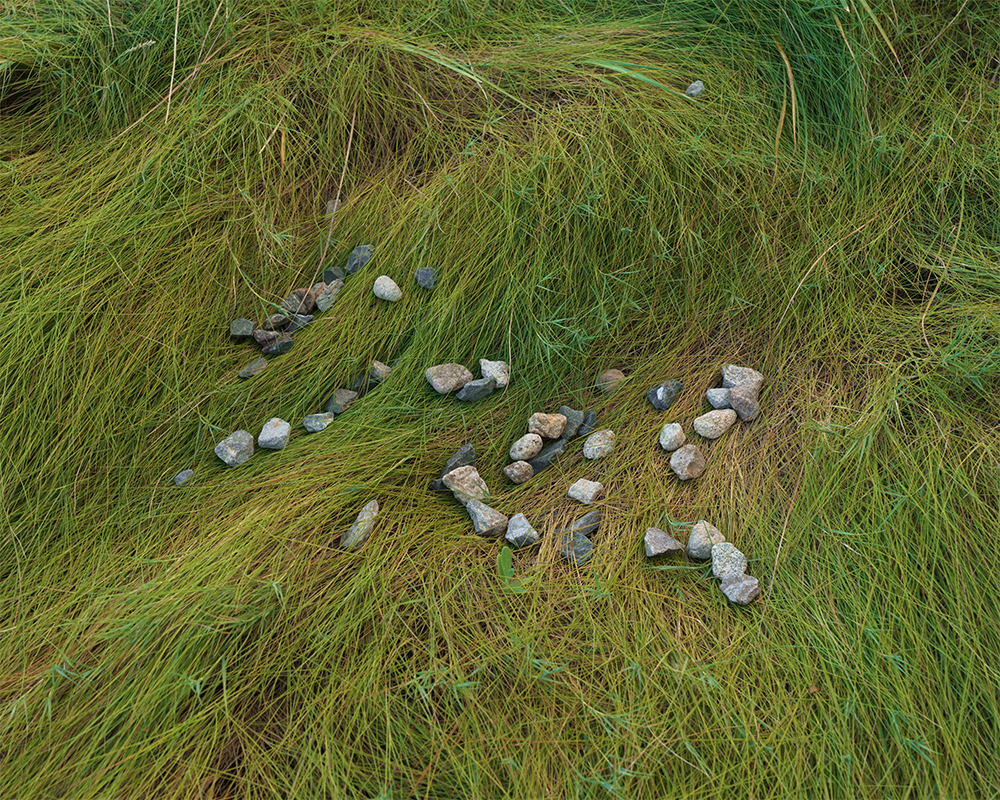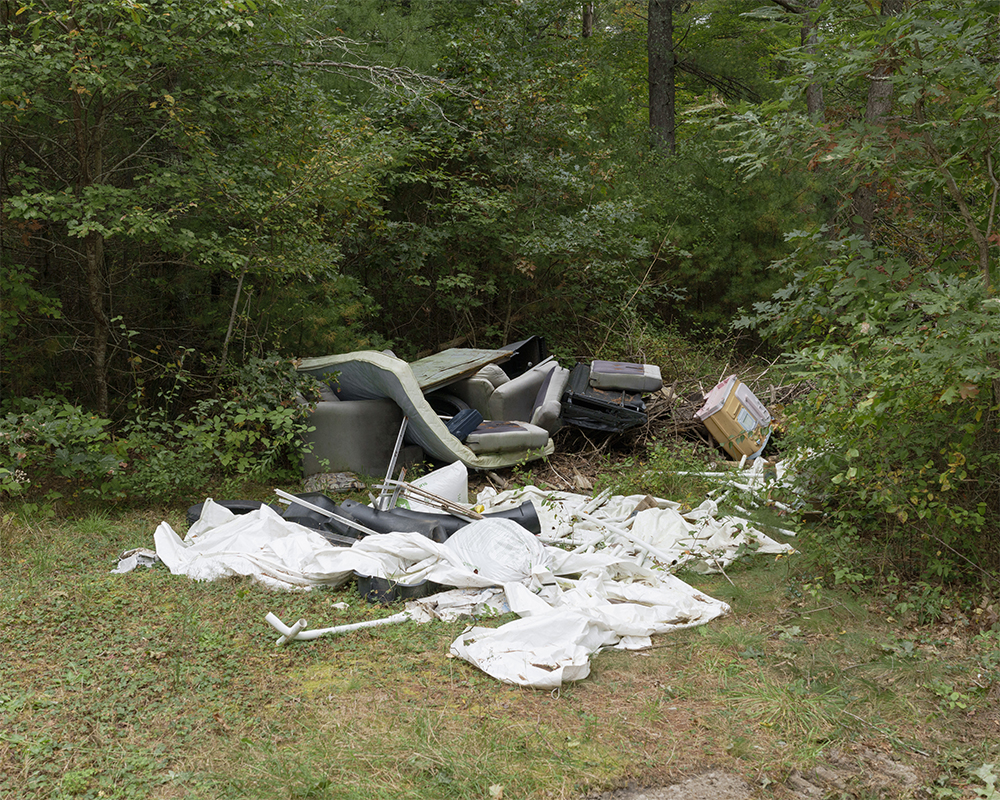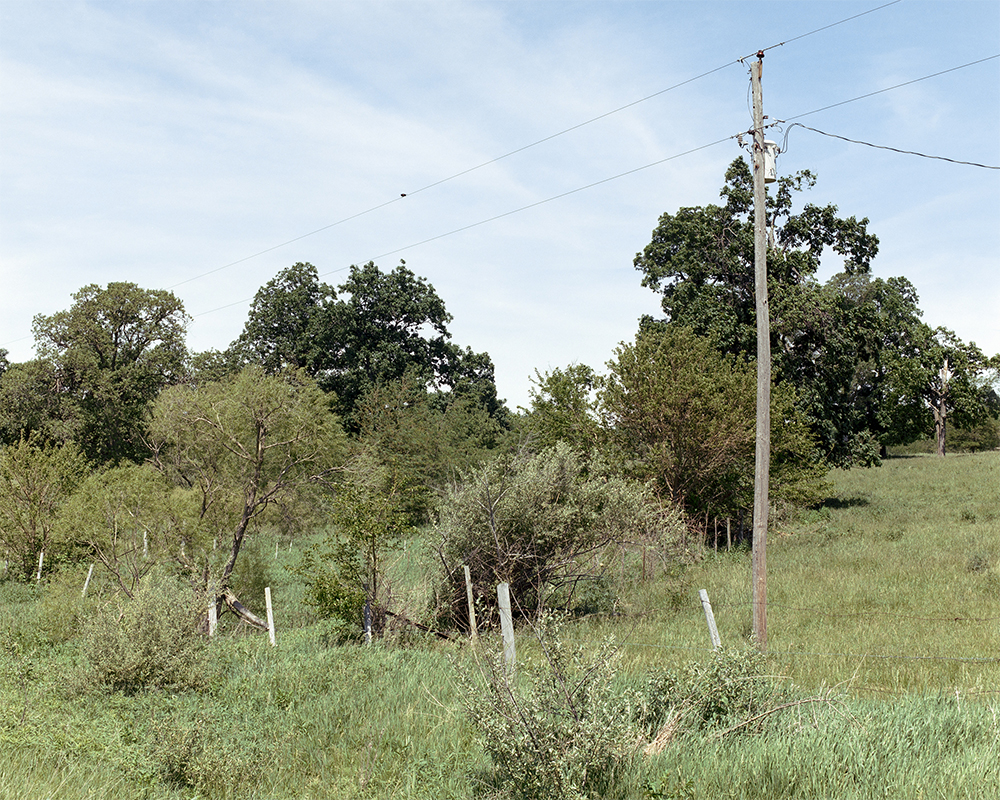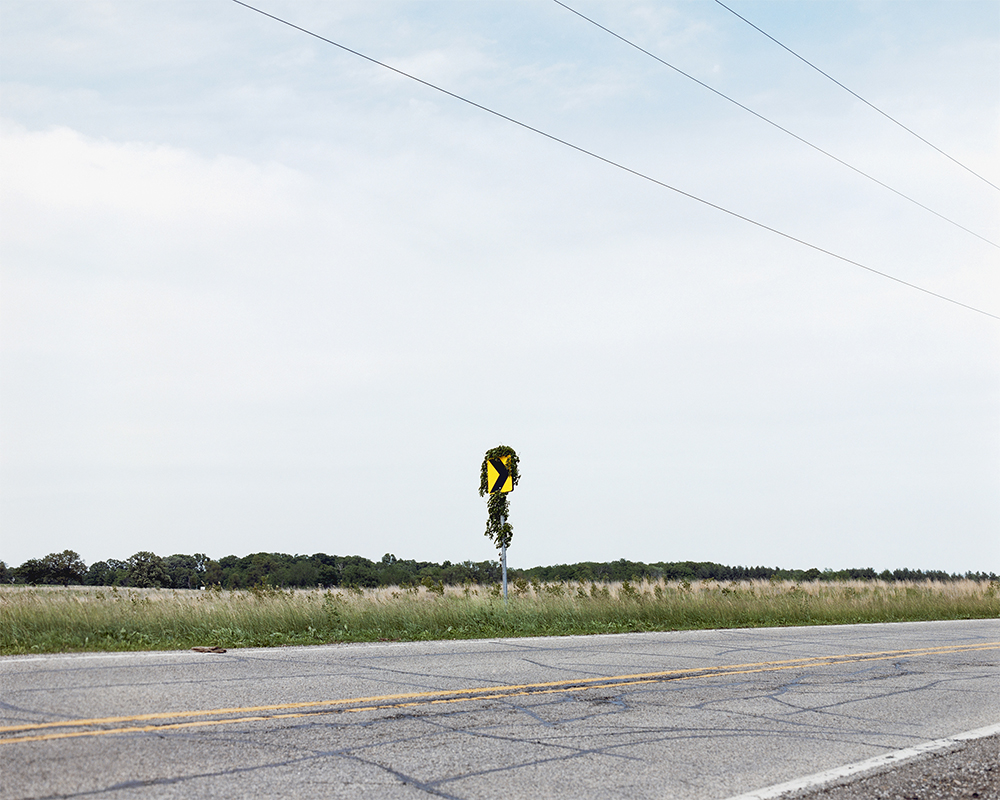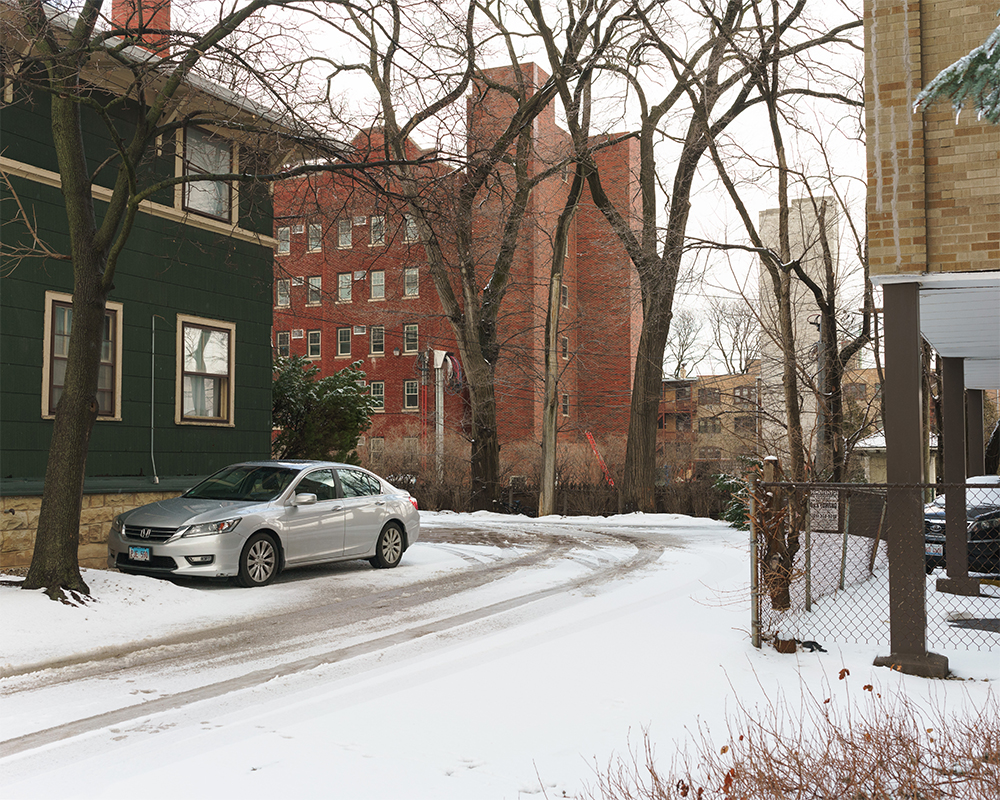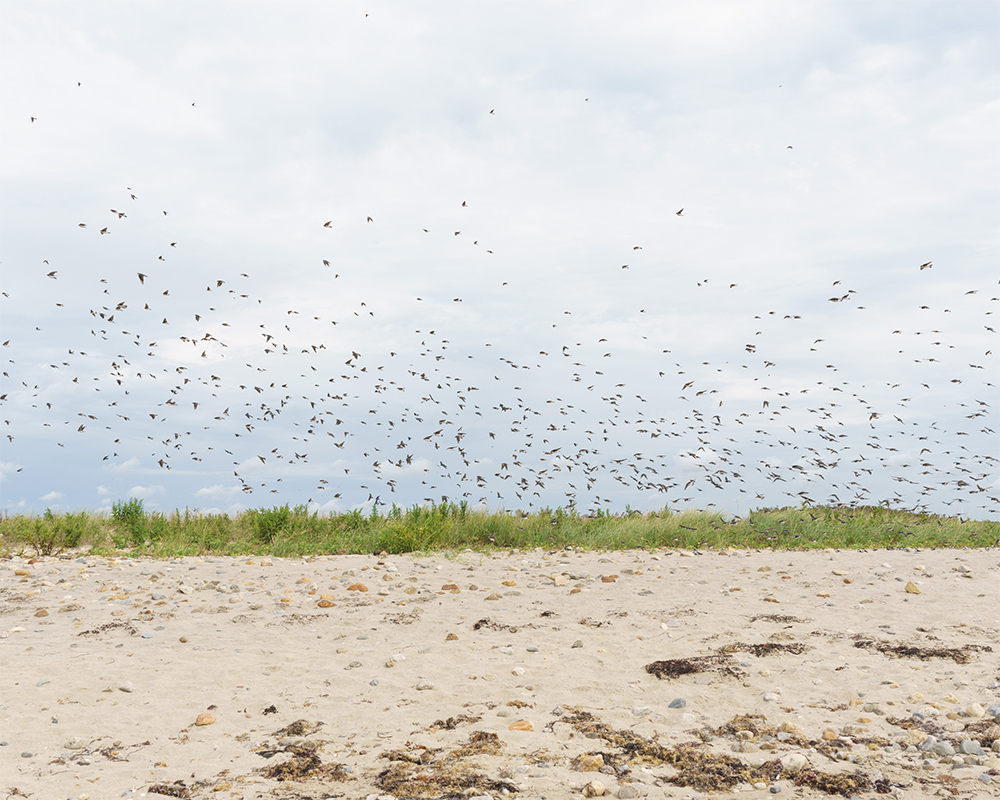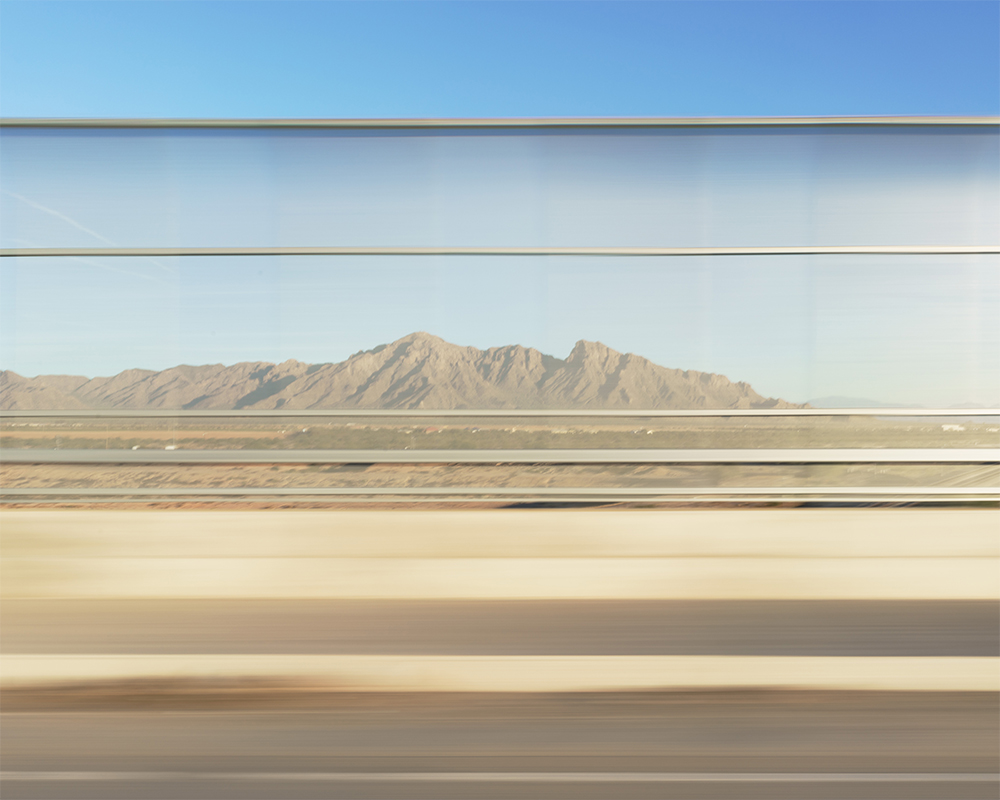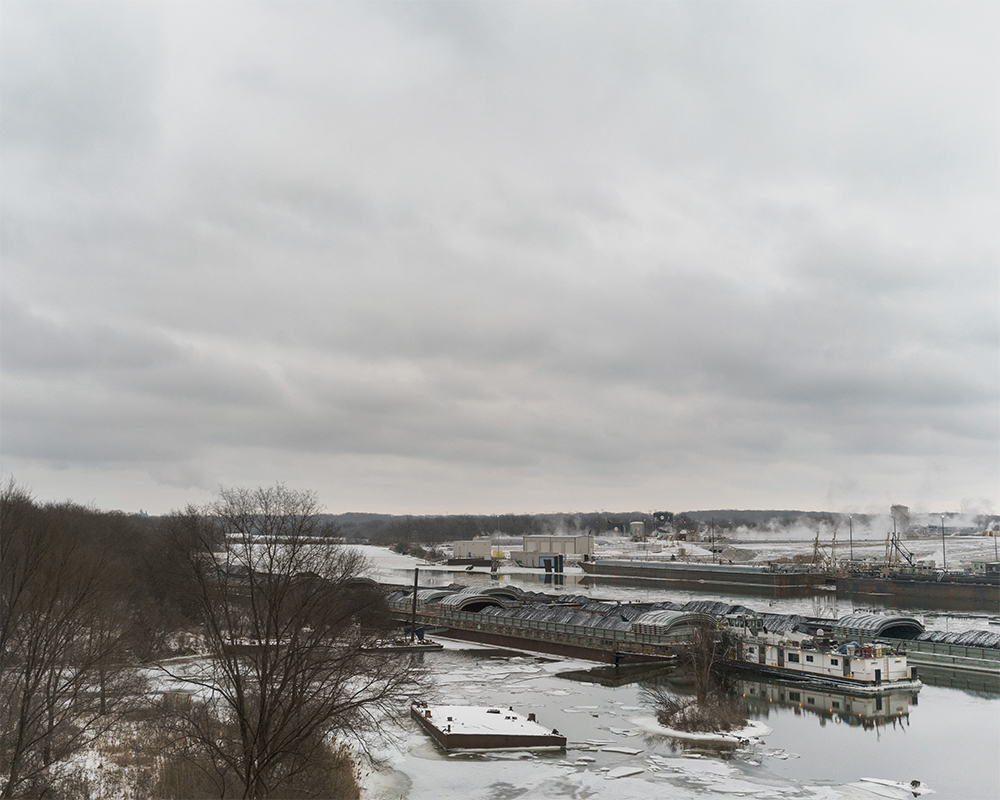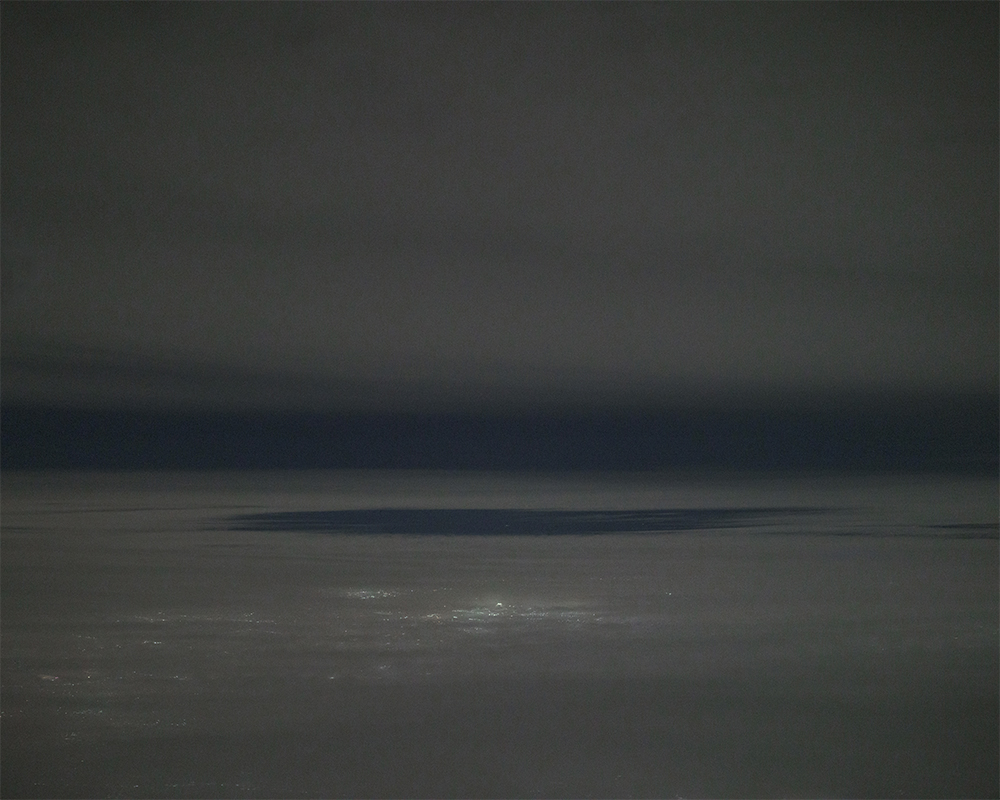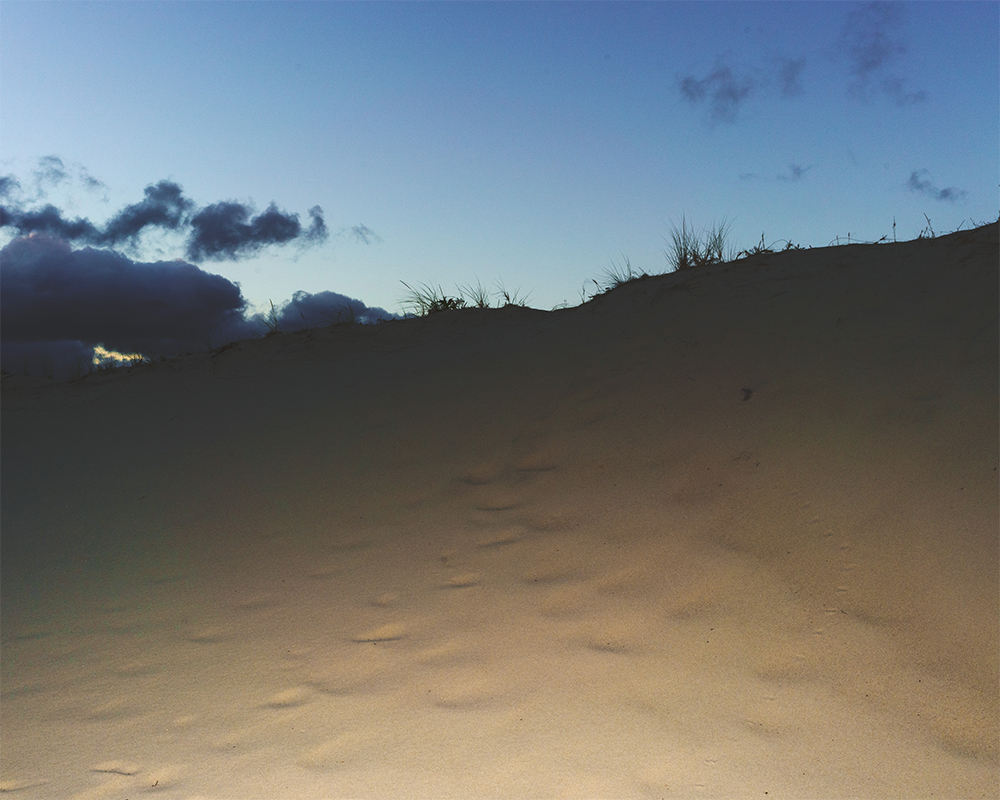Jeff Smudde: Perennial
This week, we will be exploring projects inspired by place. Today, we’ll be looking at Jeff Smudde’s series Perennial.
I was first introduced to Jeff Smudde while he was curating a zine for his publications Sad Bird Books. The zine, Nothing is Interesting and Everything is Normal, featured work based around the ordinary. We bonded over our love of Midwestern aesthetics and have become fast photo friends. I’ve been lucky to get insight into Jeff’s development as a photographer; we’ve had a few studio visits to bounce work and ideas off each other. Jeff is among the most passionate and dedicated photographic artists I’ve ever met. He not only puts everything into his periphery projects (check out his YouTube channel and Podcast Ready for Mistakes!), but he also is completely committed to his artistic practice. If you ever need someone to talk roadtrips, specs, or the importance of place, Jeff is your guy! His images explore inherent questions surrounding place and its meaning.
Jeff Smudde (pr. “SMOO-dee”; b. 1997, Royal Oak, Michigan, he/him/his) is an artist in the South coast of Massachusetts originally from central Illinois using digital and analog photographic processes and sound. His work focuses on perceptions of place through media of photo books, series and installations. He received his Master of Fine Art at the University of Massachusetts Dartmouth in 2023 as a Distinguished Art Fellow and his Bachelor of Art from Illinois State University in 2019.
Follow Jeff on Instagram at: @jeffsmudde
Perennial
Throughout my travels between the Northeast, Midwest and Southwest of the United States, I have perceived the journey and destination as one perpetual experience. The photographs in this book explore my relationship to place, which has been stretched or shrunk, rendering the distance between myself and where I am infinite or negligible. Photographs made up-close gradually pull away to photographs made far from my subjects. This is an American narrative about a sensation of placelessness that ebbs and flows with time and movement through space. It is through this process and sequence that I ask the viewer as well as myself how we perceive place and the identities associated with it.
Epiphany Knedler: How did your project come about?
Jeff Smudde: When I first moved to Massachusetts, I had no idea what I was up against both in life and in my artistic practice. I started to feel something familiar to what I did in my college years and post-college while I was a newspaper photographer – a kind of dissonance with what “home” is and what it should feel like. I started making photographs that were trying to decipher that by shooting deep black and white photos of coastal homes and the landscape around them. Then I tried projecting video over contact print cut-outs of medium format negatives, then physical layering of photos on top of photos. Many of these experiments remained just that, but some were good ideas that I would like to re-visit from a different angle in the future. By the end of my first year of my MFA, it was suggested that I dial things back – way back – throw concept out the window and work with the visual vocabulary I had been building and focusing on using strictly color photographs. What is now titled Perennial was once titled The Path Before Here. When it was the latter title, I was attempting to make a pseudo-path that referred back to past images for the viewer to follow – another cool idea that I would like to revisit one day. After The Path Before Here was dissolved, I started culling through the nearly 400 photographs I had made on digital, 6×7 and 4×5 since August 2021 when I moved to Massachusetts. I had been travelling between Arizona where by brother lives and Illinois where I’m originally from in addition to exploring the Northeast. It allowed me to make photographs of drastically different landscapes, getting a broader stretch of the American land. While culling through these photos that had been butchered in many experiments, I started to see patterns of proximity within them. I sorted them into such proximities and made the first edit of Perennial using a very formulaic close-to-far method through the whole sequence. This edition was what was in my MFA exhibition at University of Massachusetts Dartmouth in the book I made through EditionOne. Since graduating and mulling over the insight I received from the Chico Review held by Charcoal Book Club, the edit is already going through a second version which I plan on sending to official book publishers. Much of what I heard from the Chico Review was reiterated when Ed Panar came to my university as a visiting critic (and he was previously a reviewer at Chico, which I only found out the day of his visit — not sure how that escaped me!).
EK: What relationship does place play within your practice?
JS: Place it vital to my work, and I believe that place is integral to photography. Even in studio work, place plays a role in the potential meanings of the photographs. For my work, I spend a lot of time travelling around my local area, usually within a fifty to seventy mile radius, then when I travel to Illinois or Arizona to visit my family there, I have roughly the same radius. I find that using the areas that I am familiar with in addition to the passing moments while travelling when I stop in somewhere like Erie, PA to take a few pictures, it plays a different kind of role in my work for me personally, but it isn’t so important to the public perception to the work. I’ve often had people refer to my work as road trip photography, but it fundamentally isn’t made in a road trip fashion. Yes, I use road trip methods where I often have to drive significant distances to make the work, but ultimately it’s not work made about the trip(s), it’s rather work about the human experience of how we perceive place when we move through it. The photographs in this work and all of my other work are made in landscapes that are familiar to me. I spend time in the location and try to make sense of it. For those few photographs that are in motels, gas station stops or on a flight above a city I can’t recognize from above, they serve as in-between moments to the grater series (I like to think of them as in-between the in-betweens). I want my work to feel familiar to the viewer as it does to me, a kind of recognition even if the person has never been there before, or perhaps the opposite, that it’s so unfamiliar that often only I am the one who is familiar with the scene before them.
EK: I know travel is a big part of your practice; how do you approach the idea of travel and photography?
JS: It’s something that really can’t be avoided in my work. I’ve tried making work in my immediate locale, my neighborhood even my ever-changing living spaces, but it’s often come short. I can make work in my town, and New Bedford, MA is loaded with potential photographs, but I always find that getting out in my car with whatever camera rig I feel is right for the day allows me to make work that is more interesting to me. I like to expand my familiar space gradually, such that early on in my time living in Massachusetts I had only made photographs within a 20 minute drive of town, then gradually moving out further and further. It actually took me a while to finally go take photos at the Cape! There’s a lot to think about when traveling your local area to make work or scout locations, sometimes leaving your camera at home can feel horrifying but often you find locations that you want to come back to. I think about how Todd Hido found “Ohio” in the West coast and began making much of his work around that familiarity in a different place. I don’t want my work to feel like I am making photographs of “the Other,” I want to allow the scene to speak to me in a way that resonates with my own personal history with the place but also allows me to better understand where I am rather than just taking a photograph of something that looks visually interesting but have little knowledge about.
EK: Who or what were your inspiration for this project?
JS: There’s a lot of artists that I have looked at for this series. Some obvious names like Alec Soth and Gregory Halpern come up as is almost unavoidable with many current MFA students working in landscape. But I looked at the work of Alison McCauley, Jin Lee, Richard Misrach, Ron Jude, and many others for photographic influence. I wanted work that incorporated this same strive for understanding place to be my source material, these artists all involve that to some extent. With Soth and Halpern, I looked at Niagara and Zzyzx specifically since those two projects of theirs best employed this idea of relationship to place I am looking for. McCauley’s work is inspired by a similar sensation to what I’ve felt — a dissonance with what home should feel like. However for her, it’s a bit more extreme than me since she’s been moving country to country, not around the Midwest. Her aesthetic is far from mine, but its the idea behind it and I do truly love her work. My former professor at Illinois State University, Jin Lee, really made an impact on me in my time studying with her but her work is just as equally impactful to me. Her work on Lake Michigan and the Salt Mountains are bodies that really pulled me in and made me consider how the changing landscape of the lake and even mad-made objects using natural material end up holding their own sense of place while simultaneously feeling a little bit like “nowhere.” Misrach is another one of those landscape artists that is nearly unavoidable these days, like Sternfeld and Shore of the same generation of the 70’s and 80’s. Misrach’s approach to serial imagery and composition really struck me in my height of shooting for Perennial. Especially his Desert Cantos work and the desert fires. After finishing this series from a structural standpoint and I was thinking mor about the book and the sequence (including how the sequence will inevitably change), I looked at the work of Nathan Lyons Notations In Passing. Lyon’s series functions much like how Frank’s The Americans does in regard to the photo book — it’s a treasure trove of sequencing mastery. Ron Jude’s Lago and 12Hz were integral to my development of this project, as well. I saw Jude speak at RISD a while back and briefly spoke with him afterward, telling him how much it meant to me to see one of my sources speak more in-depth about his work. Lago especially captures me as it utilizes sound as a counterpart to the book and installation (as does 12Hz, but Lago is more aesthetically in-line with my Perennial). This was one of the first examples I came across of using sound with photography — when I listened to Joshua Bonetta’s sound piece for Lago while flipping through the book, I was just stunned. It opened a whole world of interpretations and made me think more about how I can utilize sound in my own work. Since I have experience with producing music, the production side of sound art isn’t too foreign to me, it’s rather the recording, composing and execution of the idea that I really want to spend more time with. My sound art historian professor Walker Downey had guided me through finding sound artists that are interested in relationship to place using the field recorder like a camera. I also have been considering how certain music I listen to has a kind of emotional connection to place like I try to make in my photographs. The Milk Carton Kids is my “obvious choice,” where they entered into my music library after I photographed them in 2018 performing in Bloomington, IL. Their music is heavily about place and the stories they tell about leaving a place, missing a place, going to a place, and so on. They fall in-line with the likes of Simon and Garfunkel, but I connect more with The Milk Carton Kids. However, I also thoroughly enjoy listening to Midlake and Iron & Wine while out driving around. It’s this softer acoustic-folk music that I feel resonates with the aesthetic I typically work in. My abstract work is definitely a little more shoegaze-y!
EK: What’s next for you?
JS: I’m already working on a new edit for Perennial using the same pool of photos, cutting it down and maybe swapping out a few photographs. I’m trying to get it to a point where I can ship it off to a publisher with the first edition and the new edit to get it published. In addition, I’ve been shopping around for smaller exhibition spaces in New England and New York to show this work. I’ve also been interested in making landscapes with artificial light, blasting dunes on the Cape with colored flash or light painting parts of trees and so on. But with the inevitable resurgence of beach-goers (even in the later hours of the day when I make the light-painted dune photos), I’ll be going out to make those photos less and reserving the bulk of that work for the off-season. After my graduation ceremony, I hit the road to Illinois to begin new work of my hometown area. This time, I’ve been using strictly my 6×7 camera and black and white film with the broad question of “how do I photograph what was once my home now that I’ve been separated it for a few years?” I’m hoping that as I keep coming back and shooting anything in the country that catches my eye that I can begin to tease out a concept to work within. In the downtime, I’m spending a lot of time with my past images. Much of my past work was either shot for projects that are now defunct or were just random photos I shot while driving around Illinois between 2019 and 2021. With my lessons learned while making Perennial, I found certain ideas present and structured “new” projects out of these old photos, such as White Noise (photos shot through a car or train window), and a (technically ongoing) series I’m tentatively tilting Gracious Land (digital photographs around Illinois). I already had my series Where the Prayers are like Weeds, but I didn’t have much of a structure or solid concept, so this time spent with it now has helped me form it better. Of course, being a newly minted MFA graduate, I’m always looking for teaching jobs to build up my CV in addition to showing my work. It’s quite strange getting to this point, and it really hasn’t hit me yet, but it’s exciting to know that “the world is my oyster” and that I can do essentially whatever I want with my work, to show this new work and new edits of old work to my friends that I trust and to keep things rolling.
Epiphany Knedler is an imagemaker sharing stories of American life. Using Midwestern aesthetics, she creates images and installations exploring histories. She is based in Aberdeen, South Dakota serving as a Lecturer of Art and freelance writer. Her work has been exhibited with Lenscratch, Dek Unu Arts, F-Stop Magazine, and Photolucida Critical Mass. She is the co-founder of MidwestNice Art.
Follow Epiphany Knedler on Instagram: @epiphanysk
Posts on Lenscratch may not be reproduced without the permission of the Lenscratch staff and the photographer.
Recommended
-
Salua Ares: Absense as FormNovember 29th, 2025
-
Ricardo Miguel Hernández: When the memory turns to dust and Beyond PainNovember 28th, 2025
-
Pamela Landau Connolly: Columbus DriveNovember 26th, 2025
-
KELIY ANDERSON-STALEY: Wilderness No longer at the Edge of ThingsNovember 19th, 2025
-
Jackie Mulder: Thought TrailsNovember 18th, 2025


